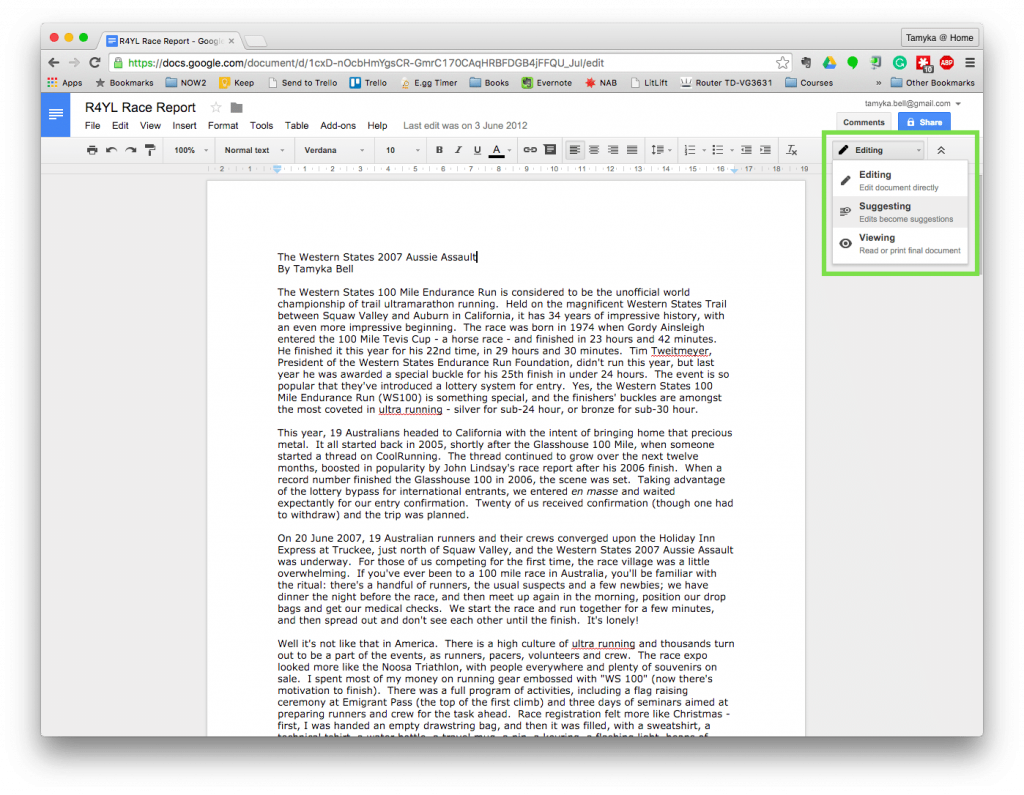
This is a guest post from Tamyka Bell, a Brisbane-based writer and tech enthusiast who will test-drive any new writing tool at least once. You can find her at cwordcreative.com.au.
Tamyka wrote this post when she heard Valerie Khoo and Allison Tait talk about using “track changes” in Word in their podcast So You Want to be a Writer. If you’re not a fan of Word and prefer using Google Docs, the same functionality exists in Google Docs, which is great if you’re collaborating on the document with an editor or proofreader.
If you want to edit or suggest edits, you can do that in change mode. In the screen capture below, I’ve boxed it in green.
(If your browser window is narrow, you might just see the pencil icon, not the text. But either way, when you click on it you’ll get the description of each mode.)
You have the option of changing it from editing, to suggesting (which is the Google Docs equivalent of ‘track changes’ in Microsoft Word), or viewing (final copy). This feature is only available to users with edit permissions for the file—it won’t work for read-only users.
I prefer Google Docs over Word for editing because it lets the editor comment directly on each change, rather than on the final text. Further, the writer can respond and ask questions in the comment thread before accepting or rejecting the proposed changes. Check it out:
Google Docs also recognises changed text as a replacement rather than an add-and-delete, leading to fewer comments, which is probably easier for the writer to review. (I find Word’s changes quite messy and convoluted.)
For these reasons, and also because Docs is free, I’d recommend using Docs if you can. (And don’t worry, you don’t need to be permanently online—you can sync your documents to your browser for offline use, too!)
Having said that, your editor may strongly prefer to use Word, so always check with whomever you’re collaborating on their preferred app.
You’ll find Tamyka Bell on Twitter @tamyka
About us
Contact us